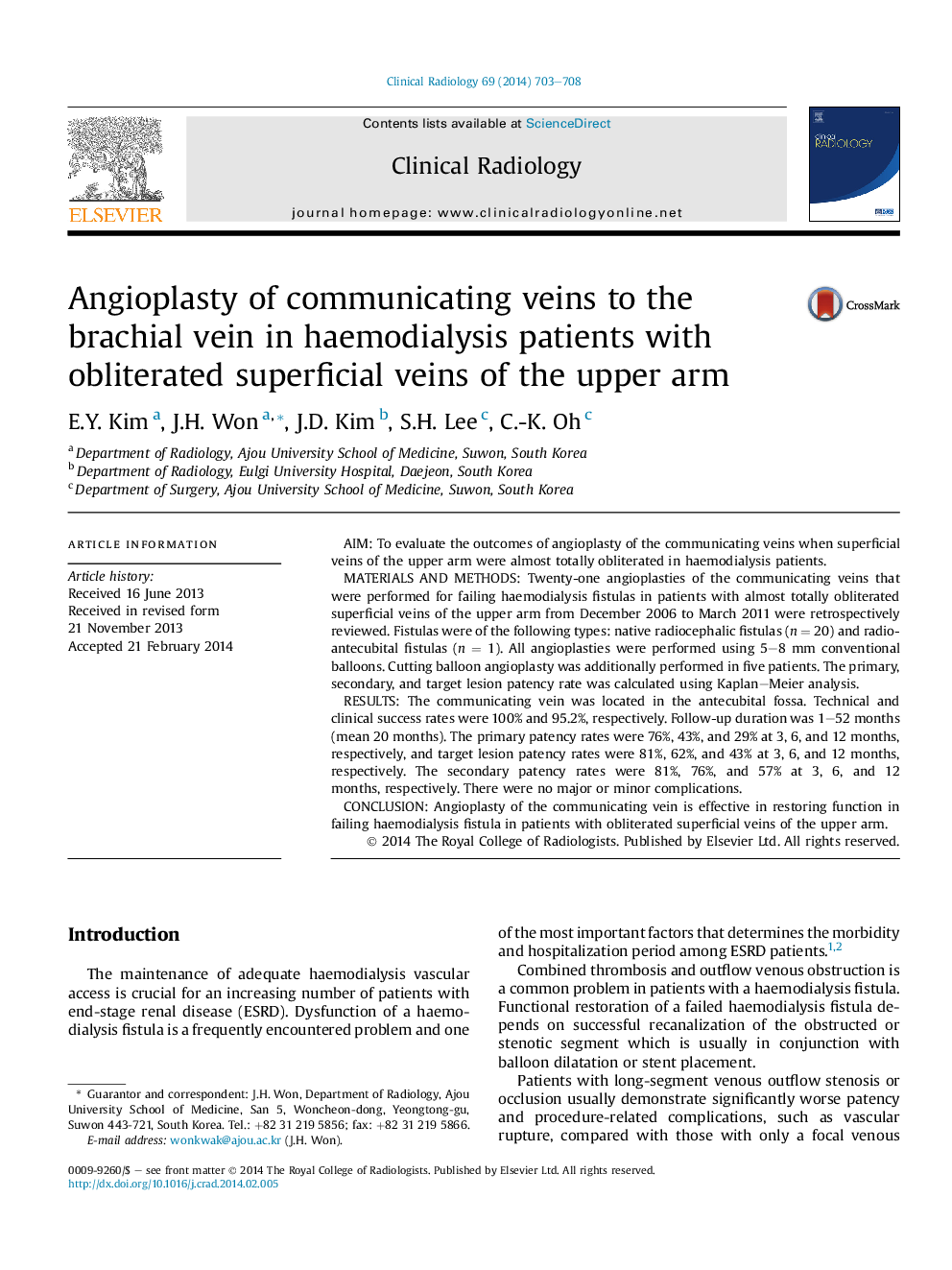| Article ID | Journal | Published Year | Pages | File Type |
|---|---|---|---|---|
| 3981925 | Clinical Radiology | 2014 | 6 Pages |
•Lack of patent superficial veins of upper arm is challenging condition for endovascular recanalization in haemodialysis patients.•This paper is to introduce angioplasty technique of communicating veins as an alternative pathway in the setting of totally obliterated superficial veins of upper arms.•The technical and clinical success rate of this technique were 100% and 95.2% and there was no major or minor complication.
AimTo evaluate the outcomes of angioplasty of the communicating veins when superficial veins of the upper arm were almost totally obliterated in haemodialysis patients.Materials and methodsTwenty-one angioplasties of the communicating veins that were performed for failing haemodialysis fistulas in patients with almost totally obliterated superficial veins of the upper arm from December 2006 to March 2011 were retrospectively reviewed. Fistulas were of the following types: native radiocephalic fistulas (n = 20) and radio-antecubital fistulas (n = 1). All angioplasties were performed using 5–8 mm conventional balloons. Cutting balloon angioplasty was additionally performed in five patients. The primary, secondary, and target lesion patency rate was calculated using Kaplan–Meier analysis.ResultsThe communicating vein was located in the antecubital fossa. Technical and clinical success rates were 100% and 95.2%, respectively. Follow-up duration was 1–52 months (mean 20 months). The primary patency rates were 76%, 43%, and 29% at 3, 6, and 12 months, respectively, and target lesion patency rates were 81%, 62%, and 43% at 3, 6, and 12 months, respectively. The secondary patency rates were 81%, 76%, and 57% at 3, 6, and 12 months, respectively. There were no major or minor complications.ConclusionAngioplasty of the communicating vein is effective in restoring function in failing haemodialysis fistula in patients with obliterated superficial veins of the upper arm.
